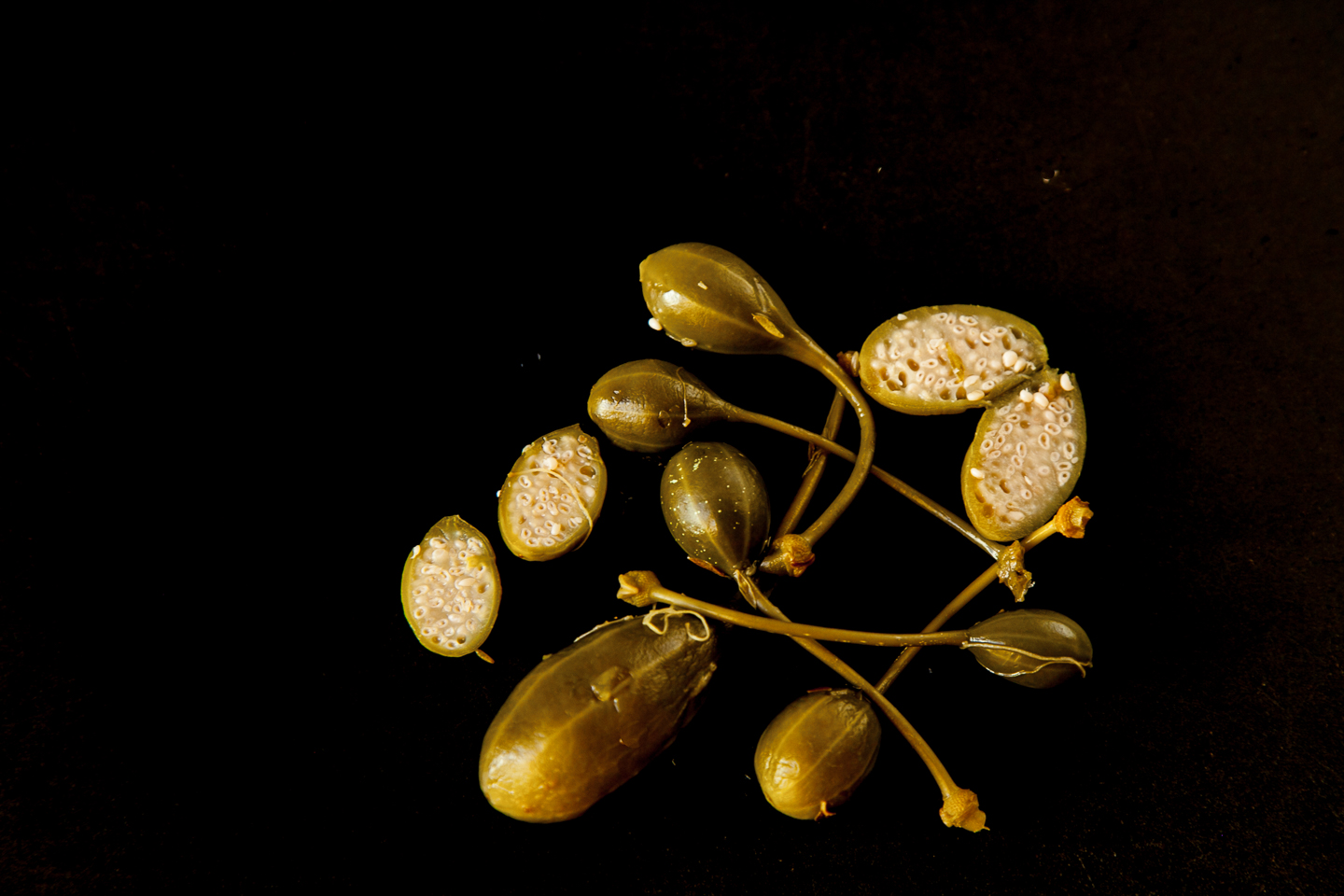
“The best capers I’ve ever eaten,” says my friend Elina. “You’ve got to try them”
And so it is that she fixes me up to meet Antonio, from a family of master caper makers.
I meet Antonio on the side of long hot dusty road and we drive down a side track to find the caper bushes. I had in mind a vast area of capers but in fact we just pull up wherever he sees an accessible bush that doesn’t require too much awkward climbing. The soil is baked dry and the southern Spanish sun relentless and it’s hard to believe that these bushes can survive these conditions let alone produce an abundance of flowers and fruit.

Antonio’s hands are scratched from the spiky thorns. Capers have to be picked by hand and their camouflage can make them tricky to spot. Once you see one you have to ease your hand in carefully and grab the caper by the stem. 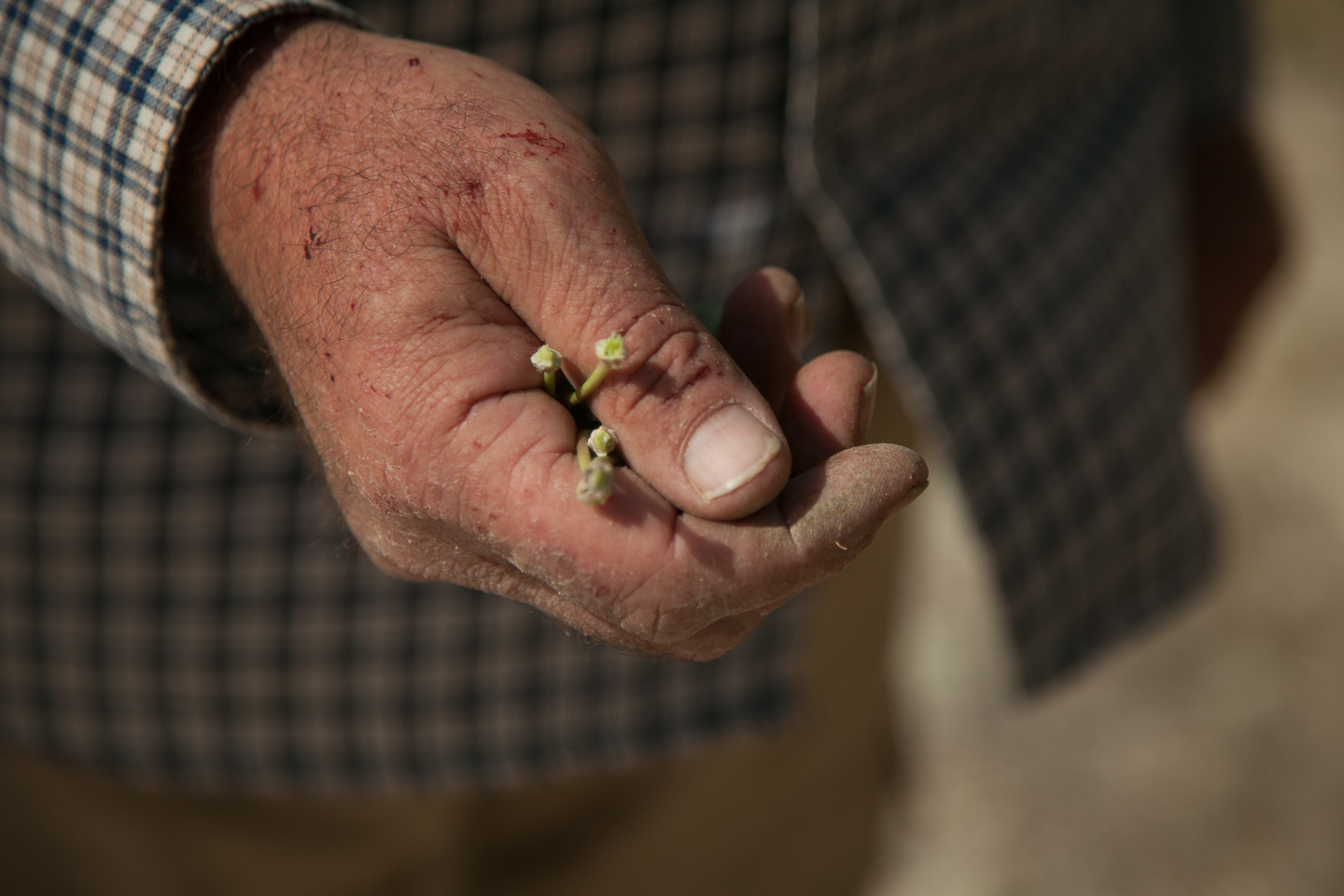
There are two stages of edible capers, he tells me. The small bud – the little round capers most commonly sold outside the Mediterranean, and the less known caper berry, the fruit following the flower, which looks like something between and olive and a mini watermelon. In Spanish this is the alcaparron (big caper) vs alcaparra . ‘Big caper’ is correct. Some of these are huge.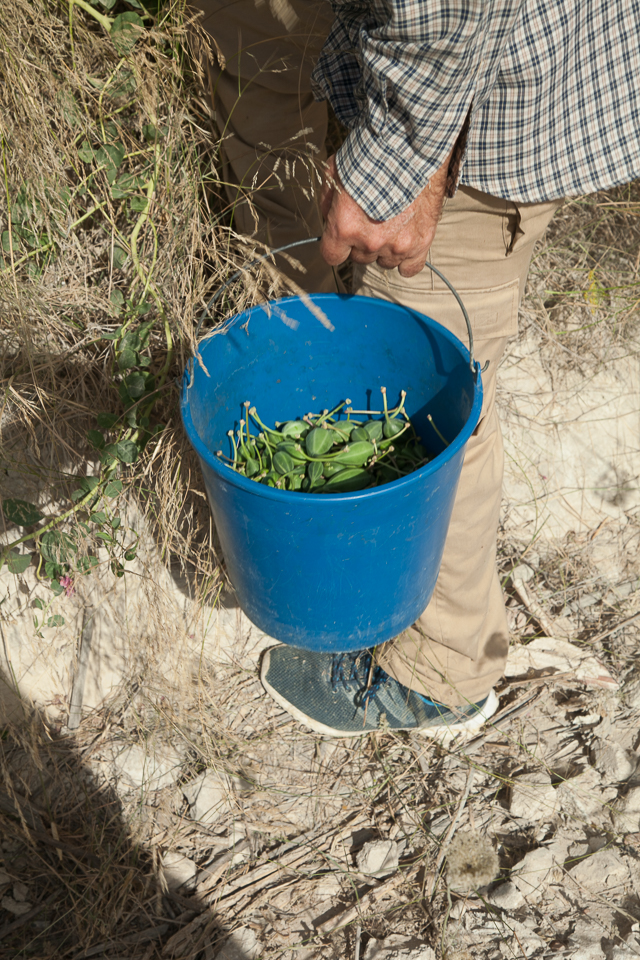
Antonio has been out picking since 7 am and has filled a sack and a bucket. So, as the sun is getting hotter and higher in the cloudless July sky, we head home to see what he does with them.
It’s a relief to get into his cool, shady patio, where capers at various stages of processing await us. He sits down with the morning’s harvest and shows me how to check they are tender, which he does with the tip of a sharp knife. One by one, each caper is tested and the hard ones tossed to the side. On the other side of the narrow street, his father is doing the same.
The caper berries that pass the test go straight into a brine solution where they remain covered for a week. Then they are rinsed and put into a pickling solution of vinegar, water, garlic, green peppers and handfuls of wild mountain oregano.
What I love is that the capers themselves are wild and that everything else that Antonio uses for pickling is local: the garlic and peppers grown in his vegetable garden, the sherry vinegar from a local bodega, the herbs gathered from the surrounding hills and the salt from the nearby salt pans. The 3 mile diet!

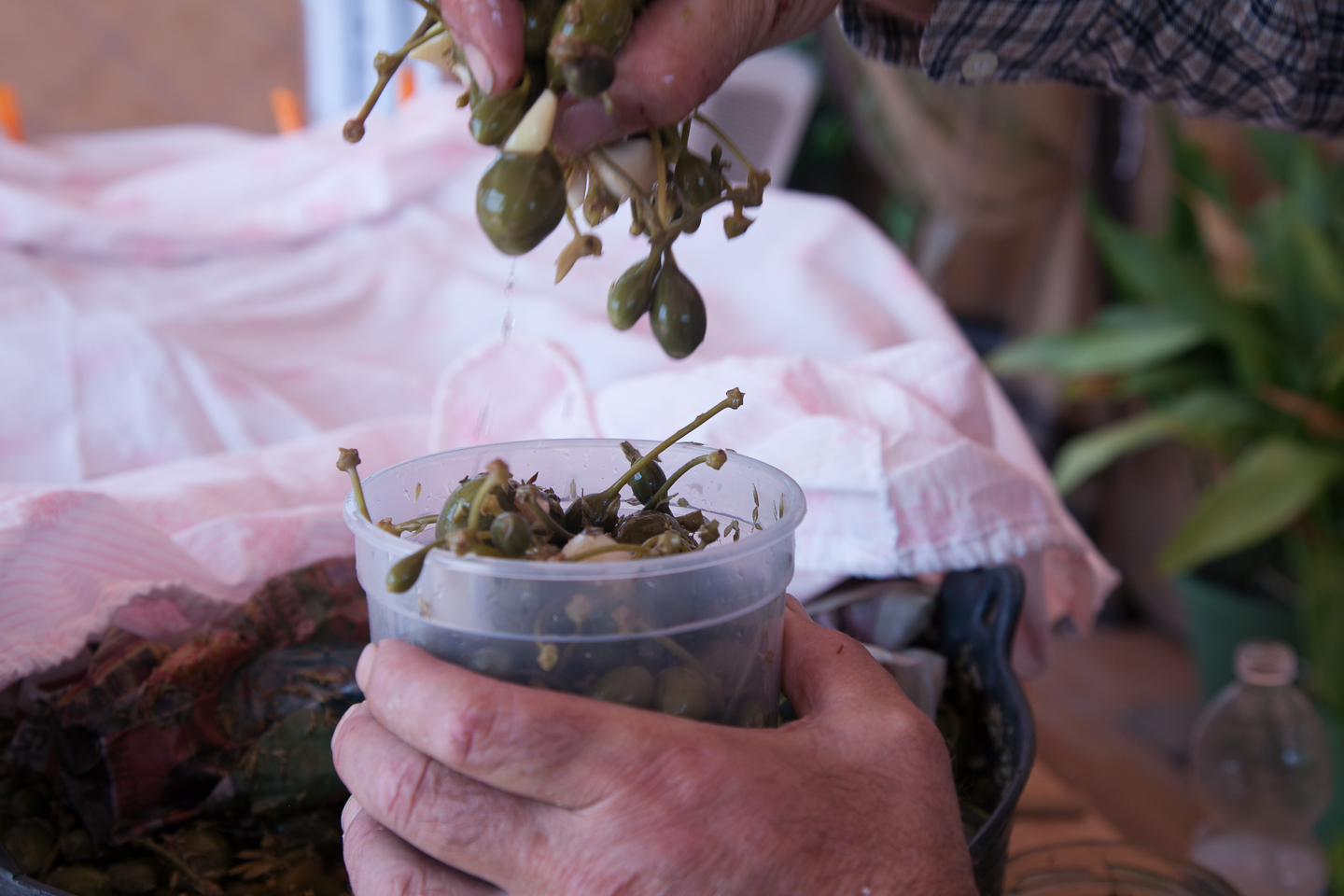
It takes just a few days till the capers are edible but their unique flavour matures with time.
Once they are ready they can be eaten whole like olives, chopped into salads and sauces or used as a garnish. The natural flavours of Spain, and delicious.
If you live in the area and are interested in trying these caper berries, let me know and I will put you in touch with Antonio. He sells directly from his home and I can guarantee you won’t be disappointed! And if you don’t live nearby, look out for them in specialist food stores. They won’t be quite as home made and natural as these but they will still be good.
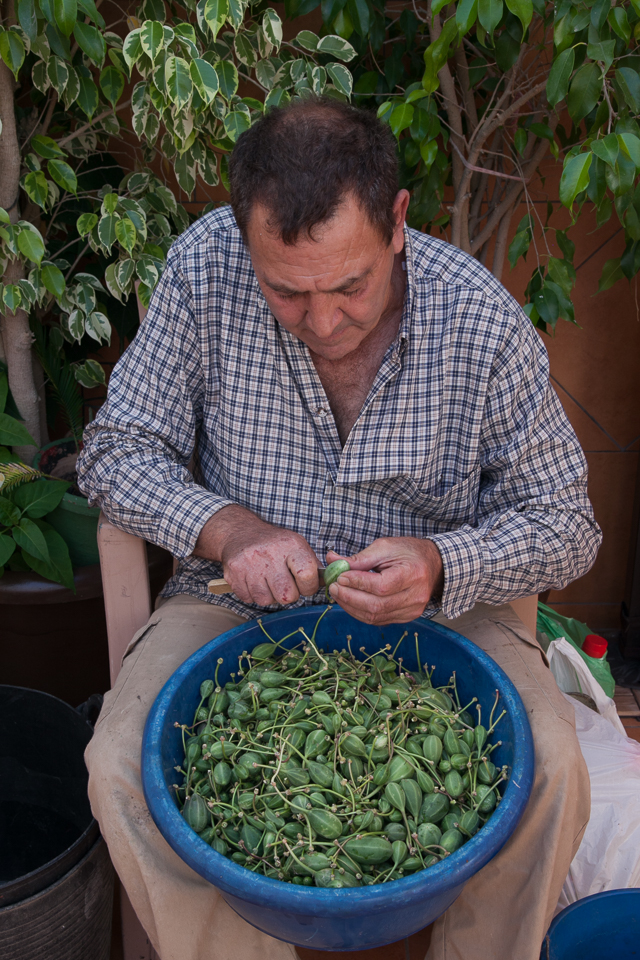


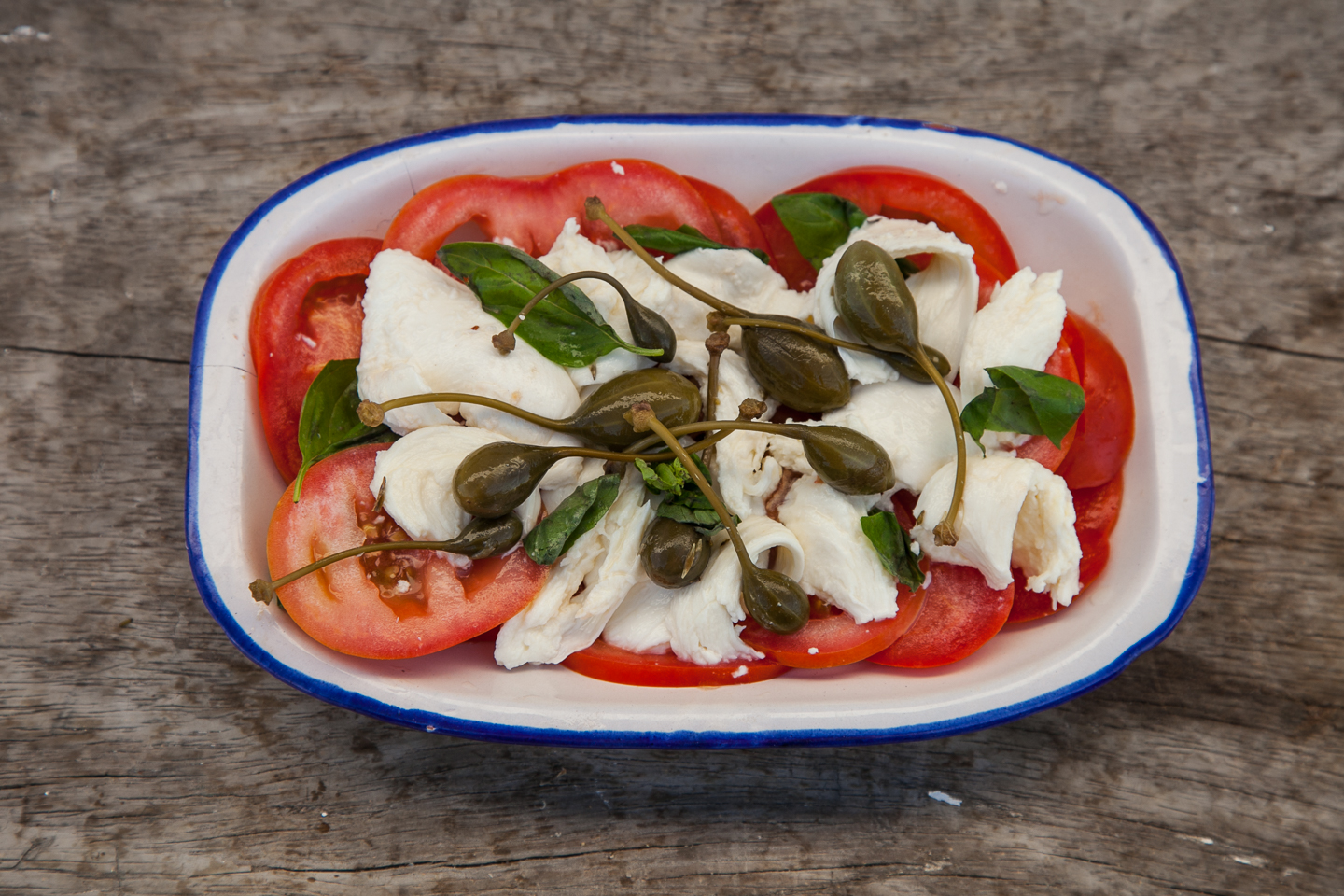
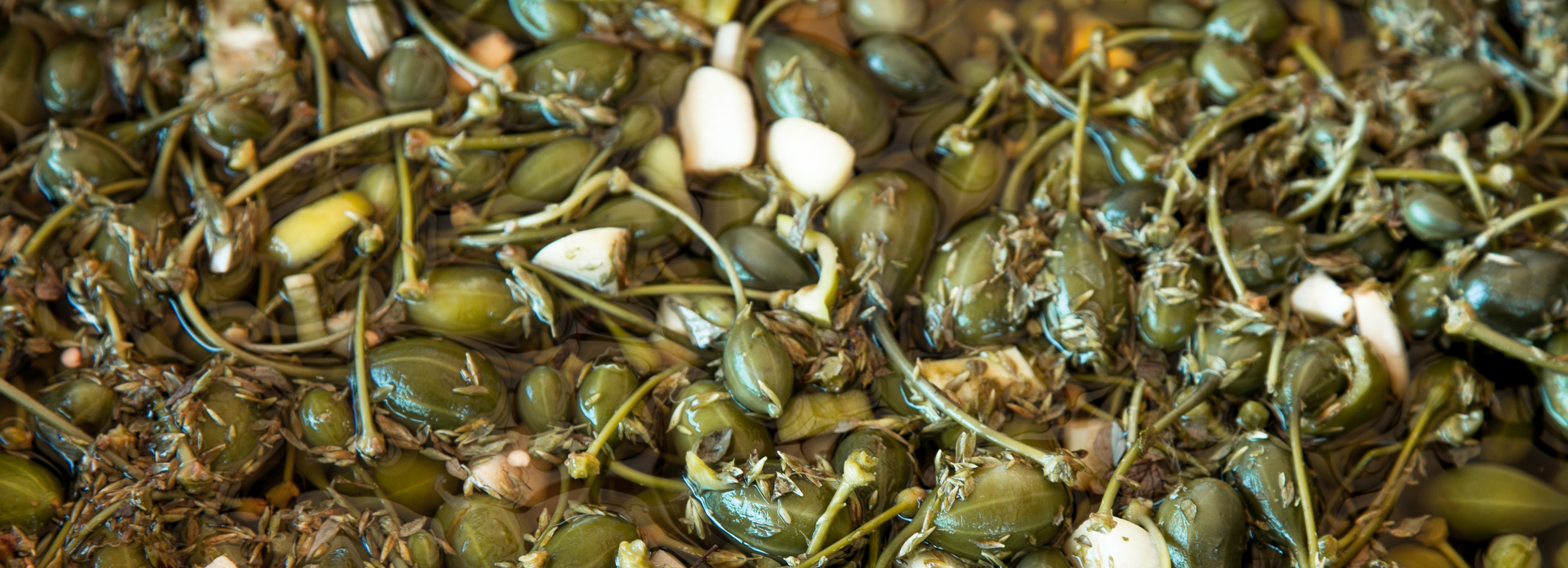
Judith Sharpe says
Fascinating Blog and stunning photography as usual. It’s time you wrote a book pulling all your blogs together, Sharon.
Sharon says
I’d love to….just need to find a publisher! Know anyone???
Geraldine Toltschin says
Hi Sharon,
Such a interesting article as usual, I have never seen a caper bush, but years ago almost purchased seeds for one.
This year I have been on another mission, not gardening or even dill pickles…..SO yes, I woud love to purchase some of
Antonio\s capers. Can you tell me how to reach him please.
Keep up the great photos and stories, we all look forward to your posts.
Cheers, Geraldine
Sharon says
Geraldine, I think you have seen more caper bushes than you realise. they are everywhere around here. They grow totally wild. As for buying, yes, sure. Give me a day or two and Ill see how much demand there is and then either send you directly to him or go and pick up a bunch of jars. Hasta pronto
Suzanne Rico says
I’ll take the salad and a caper berry in my dry martini! Yum!! xoxo